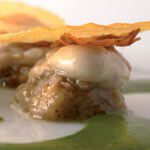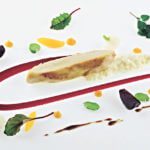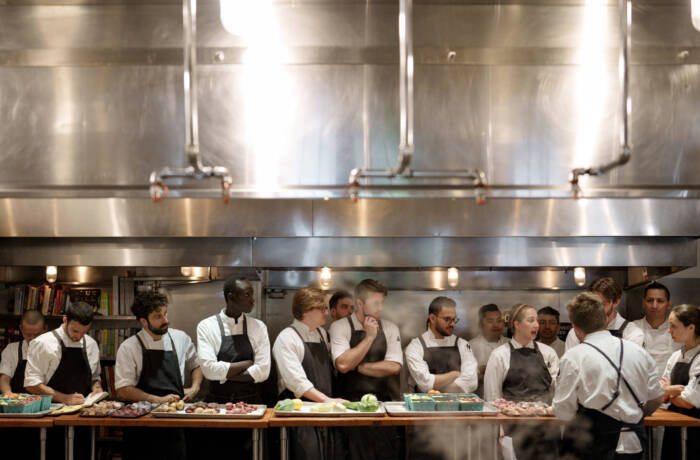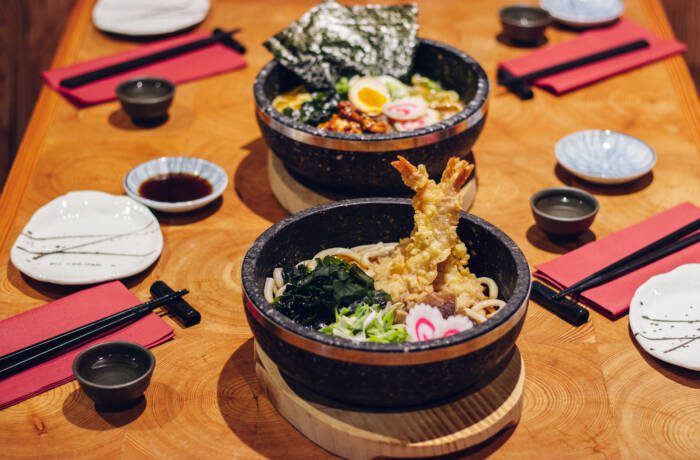- Jacques Gavard – Gagnaire’s oyster with aubergine and salmon fume
- Plating up at Fosh Food
- Marc Fosh’s farmhouse chicken with smoked bomba rice and beetroo
Presentation is an important part of any dining experience, but can the look of the dish really make or break a meal? STACEY TEO
We’ve all heard the expression “you eat with your eyes”, but how true is it? What importance do aesthetics really have on ones’ enjoyment of a meal? It wasn’t until the advent of nouvelle cuisine that food presentation began to take on the importance it holds today. It was an exhilarating time for the culinary world with never-before-seen creations coming one after another. Plating-up became an industry buzz word and the dish suddenly offered an empty canvas which chefs used to create their own personal form of gastro-art.
In the early days Paul Bocuse, Michel Guerard and the Troisgros brothers not only lightened up traditional French cooking, they also paved the way for the kind of sculpted dishes we see today. Presentation was an exciting new tool that allowed chefs to put their signatures on their dishes. But now, fifty years down the line, nouvelle is no longer new and a lot of what we see is either a copy of a copy, extremely overthought or downright silly looking.
Checking out how the food looks is the cook’s last task and the diner’s first. Food that is well-presented makes the diner want to eat it and allows them to identify the ingredients and their quality while poor presentation gives a bad first impression and means you face an uphill struggle to win over the client. The Japanese, as with so many other things, have turned food presentation into a high art. They even have a word, Moritsuke, which applies to seven very specific rules of food arrangement.
Personally I think presentation counts for about 30 per cent of the experience, the other 70 per cent of course is taste, but I have colleagues that would argue for a 50/50 split. To me one of the most important aspects of plate presentation is what it represents. Whether you are dining out or entertaining at home, presentation attests to the artistic nature of the experience, the effort behind the meal and helps set it apart from an everyday experience. This kind of attention to detail indicates that you value your guests enough to go to the trouble to try and achieve something beyond the mundane, it shows you care and that they are important to you.
As long as a dish is presentable then I’m happy with it. Don’t get me wrong, by that I mean it must look clean and simple with fresh, inviting colours and it should never look messy. I also follow the rule that everything on the plate should be there for a reason and that everything should be edible. I think the biggest mistake chefs make is to try too hard to impress with the presentation. It often makes the dish look pretentious and means they are focussing too much of their attention on aesthetics which normally is not something that makes or breaks a meal.
As a colleague of mine, Michelin-starred chef Marc Fosh says, “Food should look as natural as possible and every element should be there only if it serves to enhance the flavour of the dish. I hate inedible garnishes and towers of food that collapse and then look like a mess when touched by a fork. I know I have it right when the food looks like it was born on the plate. Of course presentation is important, but at the end of the day, it is the flavour that will bring clients back time and again.”
True, no matter how beautiful it looks, if the flavour is wrong nothing else matters. We are not making sculptures only to be admired. Eventually the client is going to taste the food, they always do, and then nothing that came before really matters.
I have been asked many times if I ever studied food design. Many culinary schools teach specialised courses in food presentation but I have always felt that they are nice but unnecessary for a chef. The most important thing is that the ingredients themselves look as good as possible.
To achieve this takes a skilled hand in the kitchen. Cooking temperatures and timing are key. For example when blanching vegetables, the water must be exactly 100 degrees Celsius, you have to add a dash of salt and then immediately run them through ice water. A good chef knows that not following these steps will mean colourless and unappetising vegetables. Likewise, overcooked ingredients not only lose their flavour but also their natural shape and colour too. Once that happens, no matter how you sculpt it, your dish will look as bland and uninteresting as it tastes. So although you may eat with your eyes, it is the cook’s hands that truly make or break the dish. My advice then, perfect your cooking techniques and the food will present itself.













Leave a Comment